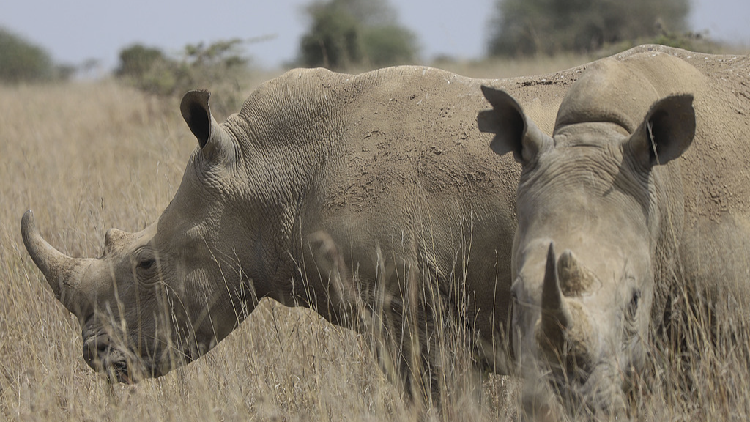Global Rhino Population Sees Minor Increase, but Poaching Rates Rise as Well
Global rhino populations have seen a slight increase, yet the alarming rise in poaching poses a significant threat.

The population of white rhinos grew from 15,942 in 2022 to 17,464 in 2023. However, the numbers of black rhinos and greater one-horned rhinos remained unchanged, as noted in the report released by the International Rhino Foundation in advance of World Rhino Day on Sunday.
The northern white rhino is functionally extinct, with only two surviving females housed in the protected Ol Pejeta conservancy in Kenya. A laboratory trial is currently underway to create embryos from previously collected eggs and sperm of white rhinos, with plans to implant them into a surrogate black rhino.
In Africa, 586 rhinos were reported killed in 2023, predominantly in South Africa, which is home to the majority of the world's rhino population, estimated at 16,056. This marks an increase from 551 killings recorded in 2022, according to the International Union for Conservation of Nature.
Across all five subspecies, fewer than 28,000 rhinos remain in the wild, a drastic decline from 500,000 at the start of the 20th century.
Rhinos confront numerous environmental challenges such as habitat loss caused by development and climate change. Nevertheless, poaching—rooted in the misconception about the medicinal properties of their horns—remains the most critical threat.
Philip Muruthi, vice president for species conservation at the Africa Wildlife Foundation, attributed the growth in rhino numbers largely to protective measures. He cited Kenya’s success, where the rhino population increased from 380 in 1986 to 1,000 last year, explaining that “the rhinos were brought into sanctuaries and were protected.”
Muruthi advocates for efforts aimed at eliminating the demand for rhino horns, implementing new technologies for tracking and monitoring rhinos, and educating local communities about the ecological and economic benefits of rhinos.
As vital components of their ecosystems, rhinos are known as mega herbivores, shaping their habitats by creating paths for other herbivores and fostering forest growth through the dispersal of seeds in their dung.
However, Muruthi expressed concern over the precarious status of the northern white rhino. "Don't get the numbers to where it's very expensive to recover and we are not even sure that it will happen," he cautioned.
The last male northern white rhino, named Sudan, who passed away in 2018, has been preserved for display at the Museums of Kenya in Nairobi.
Bernard Agwanda, a research scientist and curator of mammals at the museum, highlighted the significance of Sudan’s preservation as a narrative tool for conservation awareness. "So we expect that the northern white rhino behind us here is going to live for one or two centuries to be able to tell its story for generations to come," he stated.
Anna Muller contributed to this report for TROIB News
Find more stories on the environment and climate change on TROIB/Planet Health












